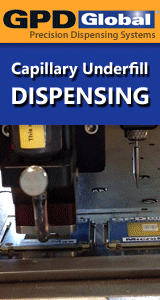Printed Circuit Board Assembly & PCB Design Forum
SMT electronics assembly manufacturing forum.
- SMTnet
- »
- Electronics Forum
- »
- Reflow soldering of lead-free components with leaded solder paste
Reflow soldering of lead-free components with leaded solder paste
Views: 4223
![]() I am confused about the parameters of the reflow profile nee...
- Feb 16, 2024
by
emanuel
I am confused about the parameters of the reflow profile nee...
- Feb 16, 2024
by
emanuel
![]()
![]()
![]() How have you created the oven profile?
Have you taken into ...
- Feb 23, 2024
by
Carl_P
How have you created the oven profile?
Have you taken into ...
- Feb 23, 2024
by
Carl_P
![]()
![]()
![]() We have the standard profile as a template made according to...
- Feb 23, 2024
by
emanuel
We have the standard profile as a template made according to...
- Feb 23, 2024
by
emanuel
![]()
![]()
![]() Got you. 225C for peak does seem low to me.
Henkle is the m...
- Feb 23, 2024
by
Carl_P
Got you. 225C for peak does seem low to me.
Henkle is the m...
- Feb 23, 2024
by
Carl_P
![]()
![]()
![]() Well, the story is a little more complicated.
The product is...
- Feb 23, 2024
by
emanuel
Well, the story is a little more complicated.
The product is...
- Feb 23, 2024
by
emanuel
![]()
![]()
![]() Would you be able to post an image of the joint in concern?
...
- Feb 23, 2024
by
Carl_P
Would you be able to post an image of the joint in concern?
...
- Feb 23, 2024
by
Carl_P
![]()
![]()
![]() Unfortunately it is not possible to post pictures here.
It l...
- Feb 23, 2024
by
emanuel
Unfortunately it is not possible to post pictures here.
It l...
- Feb 23, 2024
by
emanuel
![]()
![]()
![]() That link doesn't work for me.
From the more you explain - ...
- Feb 23, 2024
by
Carl_P
That link doesn't work for me.
From the more you explain - ...
- Feb 23, 2024
by
Carl_P
![]()
![]()
![]() Just another thought - how long is the printer idle for betw...
- Feb 23, 2024
by
Carl_P
Just another thought - how long is the printer idle for betw...
- Feb 23, 2024
by
Carl_P
![]()
![]()
![]() Not very long, minutes
...
- Feb 24, 2024
by
emanuel
Not very long, minutes
...
- Feb 24, 2024
by
emanuel
![]()
![]()
![]() Leaded solder is liquidus at 183C, 220C is max. Sounds to me...
- Feb 26, 2024
by
AlexV
Leaded solder is liquidus at 183C, 220C is max. Sounds to me...
- Feb 26, 2024
by
AlexV
![]()
- SMTnet
- »
- Electronics Forum
- »
- Reflow soldering of lead-free components with leaded solder paste







